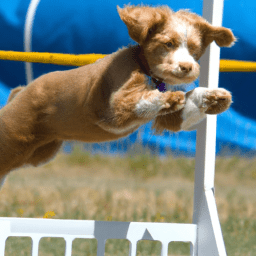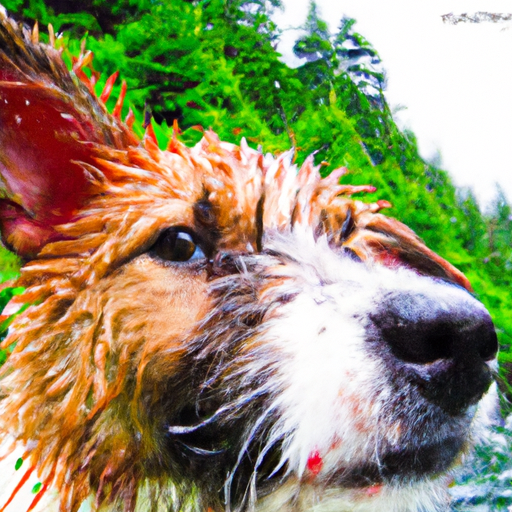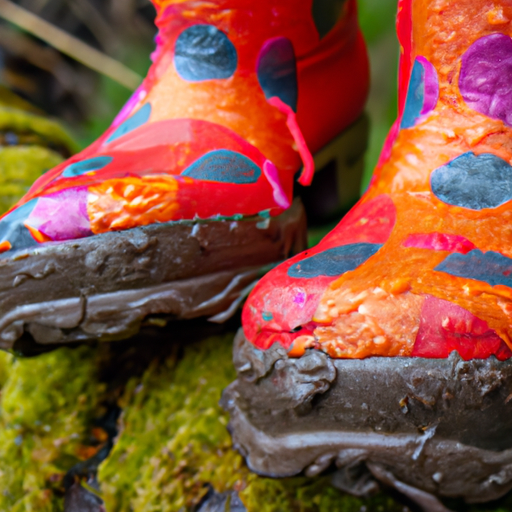Congratulations on welcoming a new furry addition to your family! As you embark on this exciting journey with your puppy, you may find yourself eager to explore the world of agility training together. However, it's important to determine the right time to introduce more advanced agility exercises to your furry friend. In this article, we will explore the factors to consider when deciding when to begin advanced agility training with your puppy, ensuring a safe and enjoyable experience for both of you. So, let's dive in and discover the perfect timing for taking those agility leaps and bounds with your four-legged companion!
1. Puppy's Age and Development
Congratulations on welcoming a new furry friend into your life! Understanding the different stages of your puppy's age and development is crucial when it comes to determining the right time to start more advanced agility training. Let's dive into the three main stages of a puppy's life and explore how they impact their readiness for agility training.
1.1 Early Stages
During the early stages of a puppy's life, which typically lasts from birth until around 12 weeks old, their primary focus is on growth and development. At this young age, your puppy is still developing physically, mentally, and emotionally. It's essential to prioritize their basic needs, such as proper nutrition, socialization, and basic obedience training.
While advanced agility training may be too overwhelming for a puppy in this stage, you can start laying the foundation for future training by introducing basic commands and encouraging positive behavior. Simple tasks like sit, stay, and recall can be taught using positive reinforcement techniques. Remember to keep training sessions short and fun, as puppies have shorter attention spans.
1.2 Adolescence
Once your puppy reaches the age of 3 to 6 months, they enter the adolescence stage. Just like in human teenagers, this phase can bring about some challenging behaviors. Adolescence is a crucial period where your puppy's physical growth and hormonal changes occur.
During this time, you can gradually introduce more advanced training exercises that focus on coordination, balance, and control. However, it's important to keep in mind that your puppy's joints and bones may still be developing, so extreme or repetitive movements should be avoided to prevent potential injuries. Patience and consistency are key when working with adolescent puppies, as they may occasionally display stubbornness or be easily distracted.
1.3 Adult Stage
Typically, dogs enter the adult stage around 1 year old, but this can vary depending on the breed. By now, your puppy has grown physically and mentally, and they're much more capable of handling advanced agility training. However, it's essential to assess your puppy's individual readiness, considering factors such as their overall health, temperament, and breed characteristics.
As your puppy transitions into adulthood, their strength, endurance, and coordination improve, making them better suited for more challenging agility exercises. At this point, you can start incorporating obstacles, such as jumps, tunnels, and weave poles, into your training sessions. Remember to always prioritize your puppy's safety and well-being, and adjust the training intensity and difficulty to match their capabilities.
2. Physical Readiness of the Puppy
Ensuring your puppy's physical readiness is crucial before embarking on more advanced agility training. Paying attention to their growth, bone development, joint health, fitness, and stamina will help prevent injuries and set them up for success.
2.1 Growth and Bone Development
During the early stages of your puppy's life, their bones are still growing and developing. It's important to allow their skeletal system to mature fully before engaging in activities that put excessive strain on their joints and bones. Consult with your veterinarian to assess when it's appropriate to start more advanced agility training based on your puppy's breed and size.
2.2 Joint Health
Maintaining your puppy's joint health is crucial, especially during their growing years. Agility training involves various movements and jumps that can put stress on their joints. To ensure optimal joint health, make sure your puppy receives a balanced diet with proper nutrients, including vitamins and minerals that support joint health. Additionally, consider incorporating joint supplements recommended by your veterinarian to support your puppy's joint health.
2.3 Fitness and Stamina
Advanced agility training requires a certain level of fitness and stamina. Gradually increasing your puppy's exercise levels and engaging in activities that promote cardiovascular endurance and muscle strength is crucial. Regular walks, jogging, and interactive play sessions can help build your puppy's overall fitness and stamina. Always remember to tailor the intensity and duration of exercise to your puppy's age and breed, aiming for a gradual progression.
3. Mental Readiness of the Puppy
Aside from physical readiness, your puppy's mental readiness is equally important when starting more advanced agility training. Building a strong training foundation, improving focus and attention, and enhancing problem-solving skills will set the stage for success.
3.1 Training Foundation
Establishing a strong training foundation is essential for your puppy's success in agility training. Start with basic obedience training, teaching your puppy fundamental commands such as sit, stay, lie down, and recall. Positive reinforcement techniques, such as treats, praise, and play, are highly effective in shaping desired behaviors. Consistency and patience are key during this phase.
3.2 Focus and Attention
As you progress to more advanced agility training, your puppy's ability to focus and maintain attention becomes crucial. Engage in activities that help improve their focus, such as controlled off-leash exercises, recall training in distracting environments, and interactive games that require concentration.
3.3 Problem-Solving Skills
Agility courses often present various obstacles and challenges that require problem-solving skills. Engage your puppy in interactive puzzle toys, hide-and-seek games, and scent-work activities to enhance their problem-solving abilities. This will help them think critically, make decisions, and adapt to different scenarios they might encounter during agility training.
4. Basic Agility Skills
Before diving into more advanced agility training, it's essential to establish a solid foundation of basic agility skills. Focusing on commands and obedience, agility foundation, and confidence building will set you and your puppy up for success.
4.1 Commands and Obedience
Mastering basic commands is essential before progressing to more complex agility training. Your puppy should respond reliably to commands such as jump, tunnel, weave, and pause. Use positive reinforcement methods to teach these commands, gradually increasing their difficulty level as your puppy becomes more proficient.
4.2 Agility Foundation
Establishing a solid agility foundation is crucial for developing your puppy's skills. Teach your puppy to navigate basic agility obstacles such as jumps, tunnels, and weave poles. Start with lower heights and wider gaps, gradually increasing the difficulty as your puppy becomes more comfortable and confident.
4.3 Confidence Building
Building your puppy's confidence is key to their success in agility training. Introduce new obstacles gradually and reward your puppy's efforts and achievements. Encouraging exploration, positive experiences, and providing a safe training environment will boost their confidence and motivation.
5. Introduction to More Advanced Training
Once your puppy has developed a solid foundation in basic agility skills, you can start introducing more advanced training techniques. Evaluating progress, incorporating advanced commands and techniques, and gradually increasing the difficulty level will keep your puppy engaged and challenged.
5.1 Evaluating Progress
Regularly assess your puppy's progress to identify areas for improvement. Keep track of their performance in different agility exercises, noting both strengths and areas that need more work. Evaluating progress allows you to tailor the training to address your puppy's specific needs and capabilities.
5.2 Advanced Commands and Techniques
As your puppy demonstrates proficiency in basic agility skills, you can introduce more advanced commands and techniques. This may include challenging jumps, complex weave pole patterns, handling maneuvers, and more intricate obstacle sequences. Remember to break down these advanced skills into achievable steps and reward your puppy's progress along the way.
5.3 Difficulty Level Increment
Gradually increasing the difficulty level of training exercises helps keep your puppy engaged and motivated. Introduce new challenges gradually, focusing on refining existing skills and introducing more complex sequences. Balancing challenge and success is crucial to keep your puppy both mentally and physically stimulated.
6. Health and Safety Considerations
Ensuring your puppy's health and safety is of utmost importance throughout their agility training journey. Regular veterinary check-ups, joint and muscle support, and warm-up and cool-down routines play a vital role in keeping your puppy healthy and preventing injuries.
6.1 Regular Veterinary Check-ups
Schedule regular check-ups with your veterinarian to monitor your puppy's overall health and detect any underlying issues. Your veterinarian can provide guidance specific to your puppy's breed, size, and individual needs, ensuring they are physically fit for more advanced agility training.
6.2 Joint and Muscle Support
Given the physical demands of agility training, providing joint and muscle support for your puppy is crucial. Consider incorporating joint supplements recommended by your veterinarian to help support your puppy's joint health. Warm-up exercises, stretches, and cool-down routines can also aid in preventing muscular injuries.
6.3 Warm-up and Cool-down
Just like humans, puppies benefit from warming up and cooling down before and after physical activity. Prior to agility training, engage your puppy in light exercises and stretching to prepare their muscles and joints. After training sessions, allow time for a gradual cool-down period, promoting proper recovery and reducing the risk of stiffness or soreness.
7. Professional Guidance and Assistance
Seeking professional guidance and assistance can greatly benefit you and your puppy during the agility training journey. Hiring a qualified trainer, attending group classes and workshops, and joining dog sports clubs provide valuable resources and socialization opportunities.
7.1 Hiring a Qualified Trainer
Working with a qualified trainer who specializes in agility training can help you navigate the complexities of advanced training techniques. They can guide you in refining your puppy's skills, fine-tuning your handling techniques, and addressing any behavioral challenges that may arise. Choose a trainer who uses positive, reward-based methods and has experience working with puppies.
7.2 Group Classes and Workshops
Attending group classes and workshops offers valuable opportunities for socialization and exposure to different training environments. These settings allow your puppy to interact with other dogs, practice focus and obedience in distracting situations, and learn from other owners' experiences. Additionally, group classes and workshops often provide access to specialized equipment that may not be available at home.
7.3 Doggie Sports Clubs
Dog sports clubs often host agility training sessions and competitions, providing a supportive community for agility enthusiasts. Joining a dog sports club can offer access to experienced handlers, more advanced training facilities, and opportunities to participate in friendly competitions and events. These clubs also help foster a sense of camaraderie and shared passion for agility training.
8. Tailoring Training to Individual Puppies
Each puppy is unique, and tailoring training to their specific needs is essential for their success. Considering breed and size, individual skill sets, and communication styles will help you optimize their training experience.
8.1 Breed and Size Considerations
Different breeds have different strengths, characteristics, and physical capabilities. Some breeds may excel in certain agility exercises, while others may struggle due to their body structure or temperament. Additionally, smaller or larger-sized puppies may require modifications in obstacles or training exercises. Understanding your puppy's breed and size will help you adapt the training accordingly and set realistic goals.
8.2 Individual Skill Sets
Every puppy has their own set of strengths and weaknesses. Assess your puppy's individual skill sets and adjust the training focus accordingly. Some puppies may excel in speed and jumping, while others may have a natural inclination for weaving through poles. Identifying their strengths and weaknesses allows you to individualize the training plan and focus on areas that require improvement.
8.3 Communication Styles
Puppies respond differently to various training methods and cues. Pay attention to your puppy's communication style and adjust your training accordingly. Some puppies may respond better to verbal cues, while others may be more visual or tactile learners. Experiment with different training techniques to find what works best for your individual puppy.
9. Building a Strong Bond and Trust
Building a strong bond and trust between you and your puppy is essential for successful agility training. Emphasizing positive reinforcement, patience, consistency, and engaging in bonding activities will foster a healthy relationship.
9.1 Positive Reinforcement
Positive reinforcement is a powerful tool when it comes to training your puppy. Rewarding desired behaviors with treats, praise, and play helps reinforce those behaviors and motivate your puppy to continue learning. Avoid using punishment or harsh correction methods, as they can damage the trust and bond between you and your puppy.
9.2 Patience and Consistency
Agility training is a journey that requires patience and consistency. Understand that puppies learn at their own pace, and progress may not always be linear. Stay patient, celebrate small victories, and remain consistent in your training approach. Consistency helps your puppy understand what is expected of them and builds their trust in you as their trainer.
9.3 Bonding Activities
Engaging in bonding activities with your puppy outside of training sessions is instrumental in strengthening your relationship. This can include activities such as interactive play sessions, leisurely walks, grooming, or simply spending quality time together. These activities help create a positive association with training and reinforce your puppy's trust and confidence in you.
10. Gradual Progression and Enjoyment
As you and your puppy embark on the agility training journey, remember to prioritize their well-being, avoid overtraining, vary training sessions, and celebrate their achievements.
10.1 Avoiding Overtraining
Overtraining can lead to physical and mental exhaustion and potentially even injuries. Avoid pushing your puppy beyond their physical limits and always listen to their cues of fatigue or discomfort. Gradually increase the intensity and duration of training sessions, allowing ample rest and recovery periods between sessions.
10.2 Varying Training Sessions
Keeping training sessions varied and engaging helps prevent boredom and keeps your puppy motivated. Incorporate different exercises, obstacles, and training environments to keep your puppy mentally stimulated. This not only enhances their learning experience but also prepares them for agility trials and competitions that involve various courses and challenges.
10.3 Celebrating Achievements
Remember to celebrate your puppy's achievements along the way. Whether it's conquering a challenging obstacle, improving their speed, or demonstrating excellent focus, acknowledging their progress boosts their confidence and strengthens your bond. Celebrate achievements with praise, treats, toys, or any other rewards that your puppy loves.
In conclusion, starting more advanced agility training with your puppy requires careful consideration of their age, physical readiness, mental readiness, and individual needs. By taking a holistic approach, prioritizing their well-being, seeking professional guidance when needed, and building a strong bond, you and your puppy can enjoy a fulfilling and successful agility training journey. So, get ready to have a blast with your furry companion as you both conquer agility courses with enthusiasm and joy!






